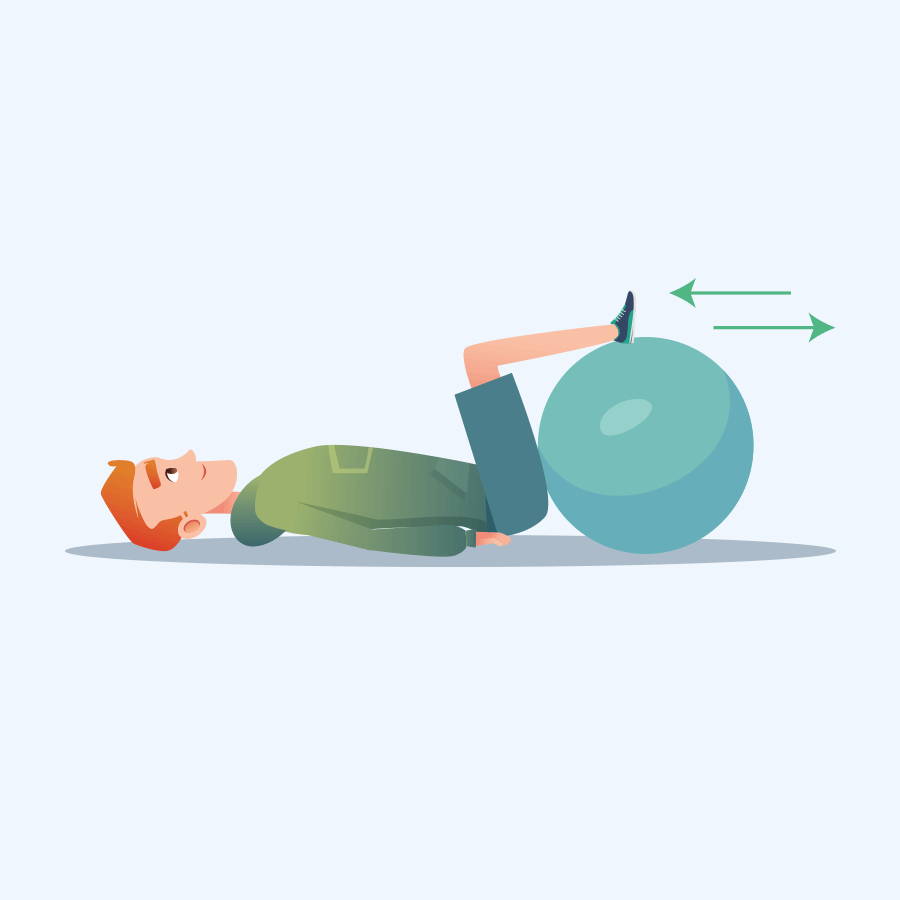What Exercises Should I Avoid If I Have Pudendal Neuralgia?
Pudendal neuralgia is a painful condition, and although exercise can be a great way to stay healthy, some activities can worsen pudendal neuralgia symptoms. This article will explore what exercises to avoid if you have pudendal neuralgia and offer tips for finding safe and effective exercise options.
What is Pudendal Neuralgia?
Pudendal neuralgia is a chronic pain disorder that affects the pudendal nerve, which runs through the pelvis and provides sensation to the genital and perineal regions. This illness can be debilitating, making it hard for those with it to do everyday things. Even though exercise is vital for dealing with the symptoms of pudendal neuralgia, it is important to avoid certain kinds of activity.

What NOT to Do: Pudendal Neuralgia Exercises to Avoid
Avoid exercises that place pressure on the perineum and cause nerve pain. These include horseback riding, cycling, and sitting for extended periods. These actions might exert pressure on the pudendal nerve, aggravating pain and inflammation.
High-impact exercises, such as running and jumping, are another sort of exercise to avoid. These activities can place a great deal of stress on the pelvis and aggravate the symptoms of pudendal neuralgia. Focus instead on low-impact exercises like walking or swimming, which can help improve general fitness without putting too much stress on the pelvic region.
Heavy lifting exercises should also be avoided if you have pudendal neuralgia. These include weightlifting, powerlifting, and other tasks such as gardening or hauling heavy loads. These activities can put tremendous pressure on the pelvic region, exacerbating discomfort.
It is also crucial to avoid exercises that can induce muscle spasms. These include activities that target the hip flexors, such as leg lifts, and abdominal exercises like crunches. These workouts can tighten the pelvic region’s muscles, putting pressure on the pudendal nerve and increasing symptoms.
You must consult with your physical therapist or another medical professional to develop a safe and effective plan with pudendal neuralgia exercises. They can help you choose pudendal neuralgia exercises suited to your condition and won’t worsen your symptoms. With the right exercise plan, you may improve your overall health, relieve pain, and improve your life.
So, if you have pudendal neuralgia, you should avoid workouts that put pressure on the perineum, high-impact activities, heavy lifting, and those that can cause muscle spasms. Always talk to a physical therapist or other medical professionals to develop a safe and effective exercise plan to help you deal with your symptoms. You can improve your overall health and feel less pain with the right fitness plan and training.
What to Do: Pudendal Neuralgia Exercises That Can Help You
It is critical to choose the right pudendal neuralgia exercises that are helpful for pelvic health and won’t worsen your symptoms.
Kegel exercises, also known as pelvic floor muscle exercises, are one of the most important exercises for treating pudendal neuralgia. These pudendal neuralgia exercises involve contracting and relaxing the pelvic-organ-supporting muscles. They can help improve muscle tone, provide pain relief, and help the bladder and bowels work better. To perform Kegel exercises, contract the muscles used to stop urine flow, hold for five counts, and then relax. This should be repeated 10 to 15 times, and you should aim to perform this exercise at least three times per day.
Stretching exercises are also an essential treatment for pudendal neuralgia. Stretching the hip and thigh muscles gently can reduce tension on the pudendal nerve and increase flexibility. You can perform these stretches by sitting on the edge of a chair with your feet flat on the floor, crossing one ankle over the knee of the opposite leg, and gently leaning forward for 15 to 20 seconds. Repeat on the opposite side.
Planks, bridges, and bird dogs can also help relieve symptoms of pudendal neuralgia. These pudendal neuralgia exercises strengthen the lower back and abdominal muscles, improving posture and alleviating pressure on the pudendal nerve.
Aerobic exercise is also important for managing pudendal neuralgia. Regular aerobic exercise, like walking or cycling, can make you healthier overall and get more blood to your pelvic area. At least 30 minutes of aerobic exercise should be performed five days per week at a moderate intensity.
It is essential to remember that every person is unique, and what works for one person may not work for another. Talk to a physical therapist or another medical professional before starting physical therapy or a new exercise plan to make sure it is safe, effective, and right for your condition.
It is important to include pelvic floor muscle exercises, stretching exercises, core exercises, and aerobic exercises in your exercise routine if you have pudendal neuralgia. These pudendal neuralgia exercises can alleviate pain and enhance muscle tone, flexibility, and general health.
If you are suffering from this condition, you may find that the following pudendal neuralgia exercises help you deal with your symptoms:
- Pelvic Floor Muscle Exercises: Also known as Kegel exercises, these involve contracting and relaxing the muscles that support the pelvic organs. They can help to improve muscle tone, reduce pelvic pain, and improve bladder and bowel function.
- Stretching Exercises: Gentle stretching exercises for the hip and thigh muscles can help to relieve tension on the pudendal nerve and improve flexibility. Examples include sitting on the edge of a chair with your feet flat on the floor, crossing one ankle over the opposite knee, and gently leaning forward.
- Core Exercises: Exercises that strengthen the muscles of the lower back and abdominal area, such as planks, bridges, and bird dogs, can help to improve posture and reduce pressure on the pudendal nerve.
- Aerobic Exercise: Regular aerobic exercises, such as walking or cycling, can help to increase blood flow to the pelvic area and improve overall health.
- Yoga: Yoga can be beneficial for managing pudendal neuralgia symptoms, as certain poses can help to stretch and strengthen the muscles in the pelvic area, and others can help to reduce stress and tension.

Pudendal Nerve Entrapment
Pudendal nerve entrapment, often referred to as pudendal neuropathy, is a condition where the pudendal nerve, which runs through the pelvic area, becomes compressed or trapped, leading to chronic pelvic pain and a range of other symptoms. The pudendal nerve is responsible for transmitting sensory and motor signals between the pelvic organs and the spinal cord.
When there’s nerve entrapment, particularly at specific points like the sacrotuberous or sacrospinous ligament or within the obturator internus muscle, the nerve can get compressed, leading to sharp, burning pain in the areas it innervates. This can include perineal pain, vulvodynia, and pain during bowel movements.
Patients may also experience sexual dysfunction as the pudendal nerve plays a role in sexual arousal and sensation. Factors contributing to pudendal nerve compression can include pelvic surgery, connective tissue disorders, muscle spasm of the pelvic floor muscles, and trauma to the pelvic region.
Conditions like pelvic floor dysfunction, where there’s an imbalance in the coordination and strength of the pelvic floor muscles, can further exacerbate pudendal nerve pain by increasing tension in the region.
For patients diagnosed with pudendal nerve entrapment, a comprehensive therapeutic approach is essential. One of the initial diagnostic and therapeutic interventions can be a pudendal nerve block, where an anesthetic is injected near the nerve, temporarily blocking pain signals.
This not only provides temporary relief but also helps in confirming the diagnosis of pudendal nerve entrapment. If there’s significant relief following pudendal nerve blocks, it can be indicative of the entrapment’s location. Furthermore, pelvic floor physical therapy becomes a cornerstone of treatment.
Through targeted exercises, patients can learn to relax and stretch the pelvic floor muscles, reducing nerve compression and alleviating muscle spasms contributing to the dysfunction. The goal is to relieve pressure on the entrapped nerve and restore normal function in the pelvic area.
For more severe cases or when conservative treatments don’t yield the desired outcomes, surgical interventions to release the nerve might be considered. Regardless of the chosen treatment path, a multidisciplinary approach involving pain specialists, physical therapists, and other healthcare professionals ensures optimal outcomes for patients suffering from this challenging condition.
Please contact our office if you are interested in Physical Therapy assessment or treatment at AZCCPP. Physical therapy is essential to rehabilitation at AZCCPP. We combine your information, clinical knowledge, medical evaluation with Dr. Hibner, and physical therapy evaluation with Tiffany to improve diagnostic and treatment quality and speed, giving you a better overall picture to make the most individualized care decisions.
To schedule the visit, please call our Scottsdale office at 480-599-9682. Also, check out AZCCPP on YouTube for more questions answered about pudendal neuralgia and more!

